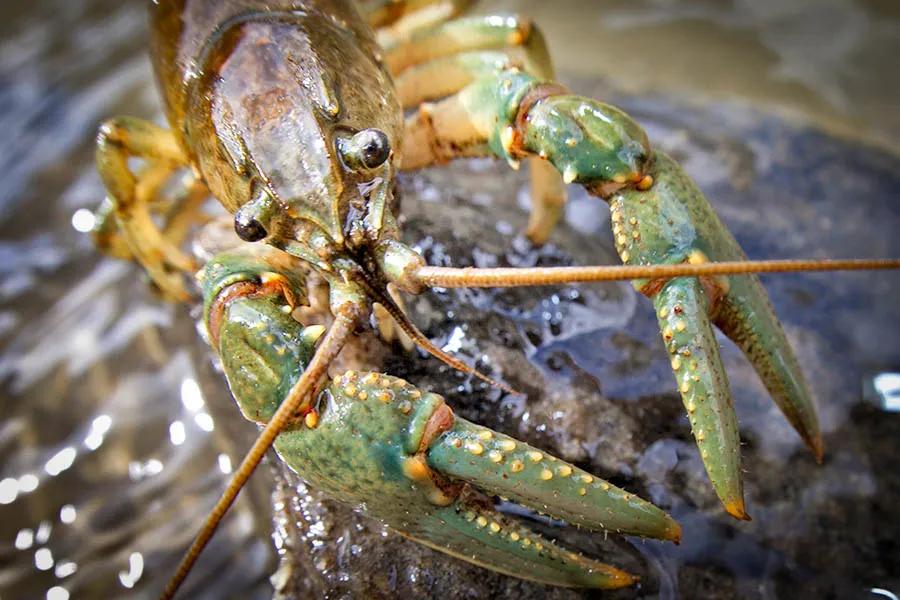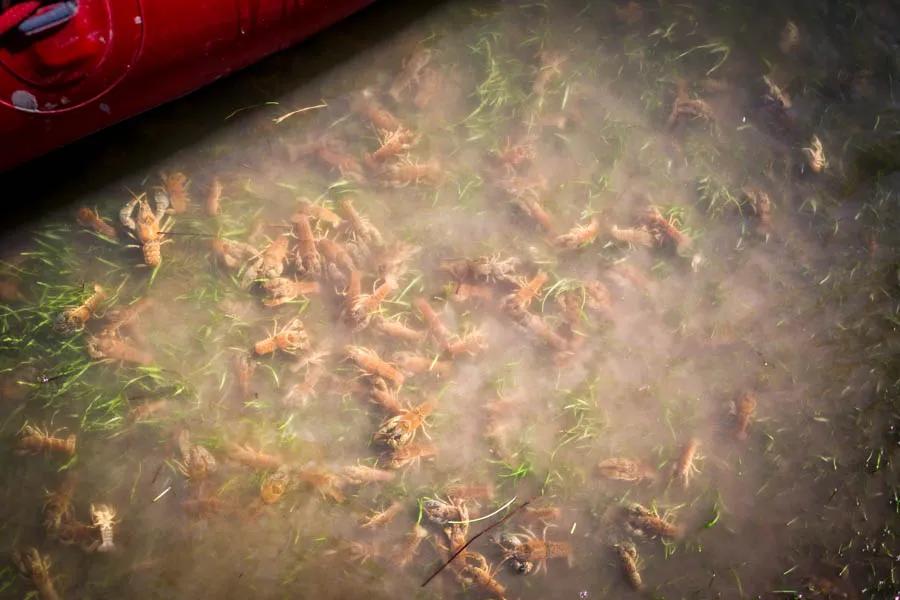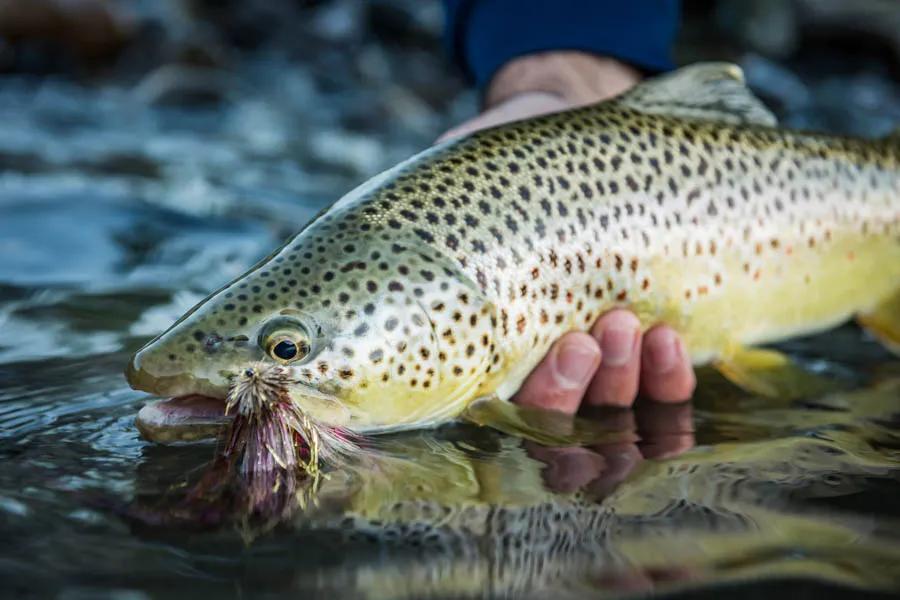
Crayfish, sometimes called crawdads or mud bugs, are large freshwater crustaceans that inhabit many of the rivers and streams of southwest Montana. Resembling a miniaturized Maine lobster, crawfish have long antennae, a pair of claws that can pinch hard enough to break skin, and a segmented tail that propels them backwards in the water.
Crayfish are omnivorous and feed on insects, aquatic vegetation, and fish. They live their entire lives in the rocky bottoms of our trout streams, lakes, and reservoirs. Crayfish will build burrows in sedimentary banks and some species will migrate, albeit slowly, throughout river systems.
So why should anglers care about these mud bugs? Because crawdads represent a protein-packed morsel available to trout year-round.
There are three species of crayfish native to Montana. The Calico Crayfish is present in the prairie waters of Montana’s eastern plains and represents the species’ western most range in the Continental U.S. The Signal Crayfish is present throughout central and western Montana including the waters of the Columbia River drainage. The Virile Crayfish is the most widespread crayfish species in Montana. It is native to the eastern part of the state but is considered a non-native invasive species in the trout streams of western Montana. It has been migrating west into the drainages of the Upper Missouri and Yellowstone Rivers over the past 30 years. A fourth native species, the Pilose Crayfish, is considered extirpated from the state.

Crayfish typically grow to two to four inches in Montana rivers but can grow up to six inches with age and advantageous conditions. They can be found in the shallows of many streams by simply turning over a rock or two. You’ll see them darting away in a quick pulsing action that you might want to mimic when fishing an imitation.
You may also see evidence of crayfish on the stream bank in the form of shed exoskeletons and carcasses. A favorite of birds as well as fish, crayfish are a common forage species for gulls, crows and other birds.
Like barnacles, crabs, prawns, and other crustaceans, crayfish need to shed their hard exterior layers to grow. This process is referred to as molting. Juvenile crayfish may molt up to 11 times in their first year to reach maturity. By year three crayfish will molt twice a year, but by age four they will molt only once a season.
Molting typically occurs within a few minutes, but the calcification period in which a crayfish hardens its new exoskeleton takes time. Crayfish are most vulnerable to trout during the molting period and immediately after they shed their casings. It is during this time that trout will key on crayfish and consume them ravenously.
Crayfish mate in the fall. Their eggs mature through the winter, and they lay in the spring. Frequent molting and rapid growth occur during the spring in Montana when water temperatures are on the rise and food sources are abundant. As such, spring is a great time of year to target trout with crayfish patterns, but given the fact that crayfish molt at different times of year depending on their age class it’s a fair bet that some crayfish are molting year-round.

A variety of classic patterns work well to imitate crayfish, including the always popular Woolly Bugger. Modern patterns like the Cowbell Cray and Near Nuff Crayfish feature a more refined approach to fly fishing with crayfish. Crayfish vary in color from bright red to blue to olive to dark brown.
Wade anglers should fish crayfish in the shallows and rocky regions along the banks, but also ply the deeper run with a slight twitch. During the early summer when water temperatures have risen and trout are in full feeding mode, feel free to pick up the pace and strip that crayfish pattern to illicit predatory strikes.
While it may be tempting to rapidly strip crayfish patterns based on their movement, a dead drift presentation beneath a strike indicator can also be effective. There are high numbers of crayfish in many of our rivers and that silhouette passing before a hungry trout is often too much for them to resist.
When fishing from a driftboat on rivers like the Madison, Yellowstone and Big Hole, a two-fly rig with a crayfish in the lead followed by a small attractor nymph like a Psycho Prince or Lightning Bug is a solid bet. The rig can be fish with or without and indicator. The crayfish pattern presents a large prey species, and the trailing nymph can be adapted to meet the conditions or the current hatch.
No matter how you fish a crayfish, be ready for a fight. They’re a key food source for Montana’s biggest trout and often draw heavy strikes from solid fish.
Next time you’re headed to the river make sure to have a crayfish pattern or two in the box.
